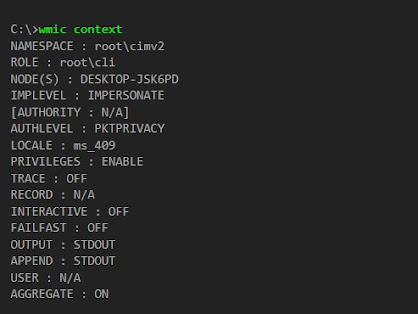Windows Server 2008
Abstract
The Windows Server 2008 Foundation Network Guide
provides instructions on how to plan and deploy the core components required
for a fully functioning network and a new Active Directory domain in a new
forest. Using this guide, you can deploy computers configured with the
following Windows server components:
·
The Active Directory Domain Services (AD DS)
server role
·
The Domain Name System (DNS) server role
·
The Dynamic Host Configuration Protocol (DHCP)
server role
·
The Network Policy Server (NPS) role service of
the Network Policy and Access Services server role
·
The Windows Internet Name Service (WINS) feature
·
Transmission Control Protocol/Internet Protocol
version 4 (TCP/IP) connections on individual servers
This guide also serves as a foundation for companion guides
that show you how to deploy additional network technologies in Windows
Server 2008.
Network hardware requirements
To successfully deploy a foundation network, you must deploy
network hardware, including the following:
· Ethernet,
Fast Ethernet, or Gigabyte Ethernet cabling
· A
hub, Layer 2 or 3 switch, router, or other device that performs the function of
relaying network traffic between computers and devices.
· Computers
that meet the minimum hardware requirements for their respective client and
server operating systems.
Technology Overviews
The following sections provide brief overviews of the
required and optional technologies used to create a foundation network.
Active Directory Domain Services
A directory is a hierarchical structure that stores
information about objects on the network. A directory service, such as
AD DS, provides the methods for storing directory data and making this
data available to network users and administrators. For example, AD DS
stores information about user accounts, such as names, passwords, phone
numbers, and so on, and enables other authorized users on the same network to
access this information.
DNS
DNS is a name resolution protocol for TCP/IP networks, such
as the Internet or an organization network. A DNS server hosts the information
that enables client computers to resolve easily recognized, alphanumeric DNS
names to the IP addresses that computers use to communicate with each other.
DHCP
DHCP is an IP standard for simplifying management of host IP
configuration. The DHCP standard provides for the use of DHCP servers as a way
to manage dynamic allocation of IP addresses and other related configuration
details for DHCP-enabled clients on your network.
Every computer on a TCP/IP network must have an unique IP
address. The IP address (together with its related subnet mask) identifies both
the host computer and the subnet to which it is attached. When you move a
computer to a different subnet, the IP address must be changed. DHCP allows you
to dynamically assign an IP address to a client from a DHCP server IP address
database on your local network.
For TCP/IP-based networks, DHCP reduces the complexity and
amount of administrative work involved in reconfiguring computers.
WINS (optional)
While DNS is a required component of a foundation network,
WINS is optional because, like DNS, it is a naming service. In some cases, you
might not need both DNS and WINS, but older operating systems and applications
might require WINS. For medium to small networks, WINS is extremely easy to
install and manage, and it is not resource-intensive. If you are in doubt about
whether you need WINS, you can test your network functionality without it and
install it if needed.
WINS provides a distributed database for registering and
querying dynamic mappings of NetBIOS names for computers and groups used on
your network. WINS maps NetBIOS names to IP addresses and was designed to solve
the problems arising from NetBIOS name resolution in routed environments. WINS
is the best choice for NetBIOS name resolution in routed networks that use
NetBIOS over TCP/IP.
NetBIOS names are used by earlier versions of Windows
operating systems to identify and locate computers and other shared or grouped
resources required to register or resolve names for use on the network.
NetBIOS names are a requirement for establishing networking
services in earlier versions of Windows operating systems. Although the NetBIOS
naming protocol can be used with network protocols other than TCP/IP (such as
NetBEUI or IPX/SPX), WINS was designed specifically to support NetBIOS over
TCP/IP (NetBT).
WINS simplifies the management of the NetBIOS namespace in
TCP/IP-based networks.
NPS (optional)
Network Policy Server (NPS) allows you to centrally
configure and manage network policies with the following three features: Remote
Authentication Dial-In User Service (RADIUS) server, RADIUS proxy, and Network
Access Protection (NAP) policy server.
NPS is an optional component of a foundation network, but
you should install NPS if any of the following are true:
· You
are planning to expand your network to include any remote access servers that
are compatible with the RADIUS protocol, such as a computer running Windows
Server 2008 and Routing and Remote Access service.
· You
plan to deploy NAP.
· You
plan to deploy 802.1X wired or wireless access.
TCP/IP
TCP/IP in Windows Server 2008 is the following:
· Networking
software based on industry-standard networking protocols.
· A
routable, enterprise networking protocol that supports the connection of your
Windows-based computer to both local area network (LAN) and wide area network
(WAN) environments.
· Core
technologies and utilities for connecting your Windows-based computer with
dissimilar systems for the purpose of sharing information.
· A
foundation for gaining access to global Internet services, such as the World Wide
Web and File Transfer Protocol (FTP) servers.
· A
robust, scalable, cross-platform, client/server framework.
TCP/IP provides basic TCP/IP utilities that enable
Windows-based computers to connect and share information with other Microsoft
and non-Microsoft systems, including:
· Windows Vista
· Windows
Server 2003 operating systems
· Windows
XP
· Internet
hosts
· Apple
Macintosh systems
· IBM
mainframes
· UNIX
systems
· Open
VMS systems
· Network-ready
printers, such as HP LaserJet series printers that use HP JetDirect cards


Comments
Post a Comment